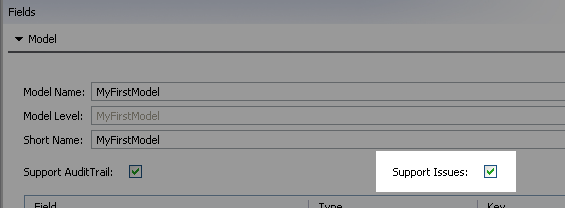Issue Computations
Issue computations are used to define business-related exceptions on transactions. These are typically used to capture any alerting conditions and raise exceptions to the user and potentially execute other actions as appropriate. One simple example would be raising an issue on a potential stock out. As orders for a particular item are filled from a warehouse and inventory reaches a threshold defined by an issue computation, an alert can be raised, and procurement actions triggered.
Issue Computations can be defined at both Module and Dataset levels and are executed within workflows or programmatically. For more information on workflows, see the section titled "Workfows" in this chapter.
You can only define issue computations on models that support issues. Application models must be configured to support issues, which is turned on by default.
Figure 4.13. Application models must be configured to support issues.

Turning this setting "on" not only adds database structures needed to support this feature, but the classes generated for the model will also contain methods necessary to support issue computation. Conversely, if this setting is turned "off", the relevant structures are not generated for those models and their related POJO's.